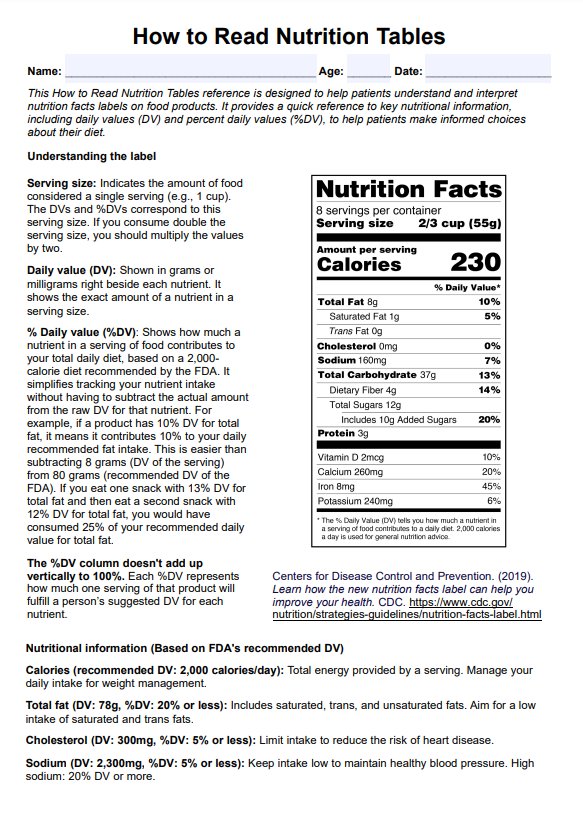Nutrition facts labels provide key information such as serving size, calories, and nutrient content. To interpret the label, compare the nutrient amounts to the daily recommended values and focus on limiting sodium and saturated fats while increasing beneficial nutrients like fiber and vitamins.

How to Read Nutrition Labels PDF
Learn how to read nutrition labels with our comprehensive guide and template, designed for health professionals and patients to make informed dietary choices.
How to Read Nutrition Labels PDF Template
Commonly asked questions
For weight loss, prioritize foods with fewer calories per serving and low added sugar, corn sweetener, and corn syrup content. Avoid ingredients like brown sugar, maple syrup, cane sugar, and sweeteners commonly found in many processed foods. Choose high-fiber and low-fat options to support a balanced diet.
The 5-20 rule is a quick way to read a product's nutrition label. 5% DV or less of a nutrient is considered low, and 20% DV or more is considered high. This rule helps you identify which nutrients you should limit or get more of in your diet.
EHR and practice management software
Get started for free
*No credit card required
Free
$0/usd
Unlimited clients
Telehealth
1GB of storage
Client portal text
Automated billing and online payments











